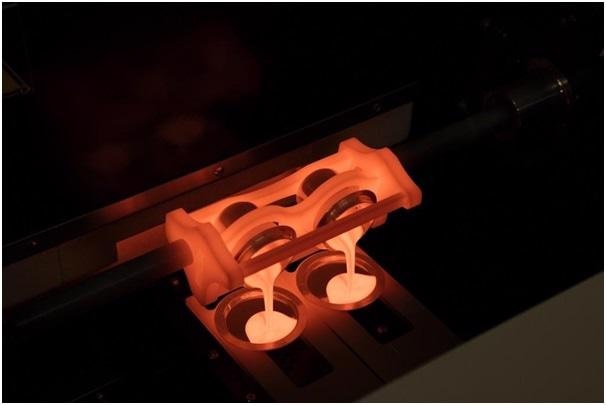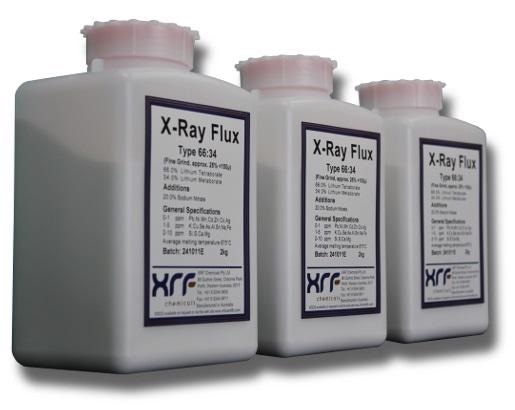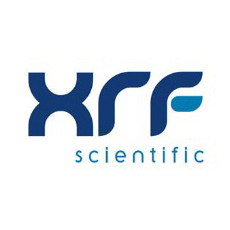
X-ray fluorescence is the process where fluorescent x-rays are emitted from a material that is excited with gamma rays or x-rays. This process can be utilized as a non-harmful analytical procedure to assess the chemistry and material composition of a sample.
The technique is useful in a variety of applications and can be utilized to analyze a broad range of materials for almost all of the periodic table.
How Does X-Ray Fluorescence Work?
X-ray fluorescence is based on the ionization process where an atom has a positive or negative charge by gaining or losing electrons to form ions. In x-ray fluorescence, the atoms within a material can ionize when it is impacted by gamma rays, or short wavelength x-ray beams.
X-ray fluorescence instruments have two main features, firstly; a detector, and secondly; an x-ray source. The x-ray source functions to create an x-ray beam that is pointed onto the sample surface. When the beam reaches the sample, the atoms within the sample create fluorescent x-rays that are analyzed by the detector.
Once they have been analyzed, there is a difference in energy between the first x-ray beam and the fluorescent x-ray produced, and this energy created by the fluorescent beam is directly associated to a particular element being analyzed.
X-ray fluorescence can be utilized in a broad range of applications including the surface analysis of materials, for example measuring coating thickness and thin film, and in processes of quality control.
X-Ray Fluorescence Sample Preparation
To carry out a successful x-ray fluorescence analysis, the sample needs to be prepared properly. There are many different ways of preparing samples to create a successful analysis, these can include solid samples, loose powders, liquids, fused beads, and pressed pellets.
When carrying out the fusion method in XRF sample preparation, a flux is a chemical utilized to dissolve an oxidized sample to create a fused bead, free from any mineral structures. Borate fusion is a common procedure and there are many chemicals that can be used as a flux in this procedure.
Flux Considerations
In the context of each application and its requirements, there are a wide range of features that should be considered before choosing a flux.
The flux purity can be highly important when used in applications where trace level precision is necessary. Ensuring that there are high levels of purity is also fundamental in reducing the chances of contamination of samples and background intensity.
When selecting a flux, the best mixture of sample and flux is neutral. It is important to think about the acidity or basicity of the sample when choosing the correct flux to make sure that it is as neutral as it can be.
The physical structure of the flux can also affect how the flux performs. The most common structures are beaded, powder, and granular. The format of the flux can have a massive effect on the weighing accuracy, melting rates, and hygroscopy of the fusion process. Most often, a pre-fused flux can be the best in providing successful fusion.

XRF Scientific Fluxes
XRF Scientific has a broad range of flux products that can be used in a variety of applications. Lithium tetraborate and lithium metaborate products by XRF Scientific can be purchased in varying compositions.
The lithium metaborate 100% is the best suited for wet chemistry applications as it has a melting point of 845 oC and has a high reactivity with acidic samples. On the other hand, lithium tetraborate 100% flux can be utilized with calcium oxide, copper sulfate, and magnesium oxide samples. This flux can be used successfully for oxide samples in higher amounts, or samples with a high level of limestone.
The fluxes that are more alkaline are as follows: Lithium Tetraborate 35.3%, Lithium Metaborate 64.7%, Lithium Tetraborate 66%, Lithium Metaborate 34%. These are best used in alumino-silicates.
XRF Scientific also creates and provides customized x-ray fluxes when a borate flux is not a useful option. XRF Scientific creates lanthanum-based fluxes, sodium-based fluxes, and fluoride-based fluxes, and these can all be customized to the user’s exact needs.

This information has been sourced, reviewed and adapted from materials provided by XRF Scientific.
For more information on this source, please visit XRF Scientific.